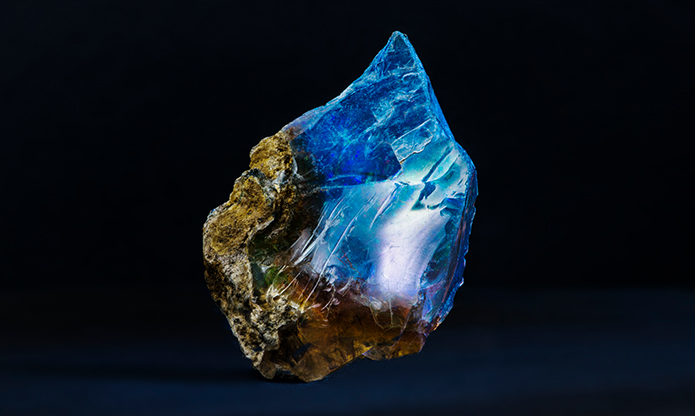Jesper Bendix of the University of Copenhagen is receiving a grant of nearly DKK 17 million to establish an advanced platform in Denmark for the in-depth investigation of crystalline materials. This grant is one of nine new grants totalling DKK 135 million that the Novo Nordisk Foundation has awarded under its Research Infrastructure Programme.
Researchers in many fields – from medical research to geology – want to be able to study crystals on a micro- or nano scale. This will advance researchers’ knowledge about such topics as materials properties.
Opportunities to routinely carry out this type of research have been limited in Denmark, but this will change following a grant of nearly DKK 17 million awarded by the Novo Nordisk Foundation under its Research Infrastructure Programme to Jesper Bendix, Professor, Department of Chemistry, University of Copenhagen.
The grants under the Programme aim to support and enable the establishment and maintenance of state-of-the-art research infrastructure and equipment to benefit research communities in Denmark. The infrastructure will be accessible not only to the grant recipients but will be open-access to other academic and private research communities in Denmark.
Unique opportunities
The grant will enable Jesper Bendix to purchase equipment to carry out electron diffraction on crystalline materials and to hire a technician to carry out the studies over the next 5 years. Jesper Bendix says that the grant will facilitate unique opportunities not just for him but for researchers throughout Denmark.
“With the establishment of this technology at the University of Copenhagen and similar opportunities at the Technical University of Denmark, Denmark will become a world leader in electron diffraction. This will attract considerable attention not only in Denmark but also internationally,” says Jesper Bendix.
Electron diffraction is a technique for studying structures in crystalline materials with an unprecedented level of detail. The technology has been around for many years, but companies have only recently simplified the technology and commercialised it. Researchers can use this technology to study crystals on scales as small as 100 nanometers, which is on the border between a crystal and a molecule.
Jesper Bendix says that researchers in many fields are broadly interested in learning more about the crystalline structure of various materials.
“Our application has had substantial support from both researchers and industry, all of which are interested in obtaining access to use electron diffraction in their research,” he adds.
Pharmaceutical industry lining up
Drug developers are especially interested in electron diffraction.
Many drugs have a crystalline structure, which helps determine the drug’s properties, such as solubility. Changing this crystalline structure without changing the molecular structure can consciously or inadvertently change how the drug functions in the body. If this happens accidently, a drug may not have time to dissolve and have an effect in the body before it is excreted again.
Jesper Bendix explains that the pharmaceutical industry is already lining up to use the company that fabricates the electron diffraction equipment, since the industry needs to know the structure of drugs to make them as effective as possible.
“We will also notice this interest,” he says.
Geology is another useful field for using electron diffraction. Geologists know of about 6,000 minerals with crystalline structure, but many more may exist. The structural understanding of geology has been limited by the available measurement methods, but having access to electron diffraction equipment in Denmark will enable geologists to understand crystal growth and to find new minerals with potentially useful properties.
“My interest is in fabricating new quantum materials with electrical or magnetic properties. We are therefore often challenged to make crystals that are large enough for us to determine their structure. The opportunity to carry out electron diffraction will enable us to study completely new types of materials,” concludes Jesper Bendix.
Nine grant recipients
The Foundation has just awarded DKK 135 million under its Research Infrastructure Programme. The nine grant recipients are as follows.
- Thomas Andersen, University of Southern Denmark: OSIC: Odense Spatial Imaging Consortium, DKK 16,598,366
- Jesper Bendix, University of Copenhagen: Electron Diffraction for Structure Elucidation of Micro- and Nanocrystalline Materials, DKK 16,889,114
- Nanna Bjarnholt, University of Copenhagen: PlantMSI – Visualizing the Metabolic Life of Plants and in Plant–microbe Interactions by Mass Spectrometry Imaging, DKK 13,619,849
- Jan Christensen, University of Copenhagen: Chemical and Toxicological Fingerprinting Infrastructure (Contaminomics), DKK 15,957,113
- Nikos Hatzakis, University of Copenhagen: Center for 4D Cell Dynamics: Lattice Light Sheet Microscopy for Imaging in Live Cells and Tissues Deciphering Internalisation and Trafficking Pathways, DKK 12,553,025
- Peter Heegaard, Technical University of Denmark: BIOSHARE – Infrastructure for Next-generation Animal Models of Human Lifestyle Diseases, DKK 14,802,712
- Daniel Ketelhuth, University of Southern Denmark: Danish Center for Advanced Cell Analysis – Strengthening Natural and Biomedical Sciences to Promote Translational Research, DKK 13,183,905
- Guillermo Montoya, University of Copenhagen: Towards the Next Resolution Revolution in Cryo-EM, DKK 15,884,125
- Thomas Vosegaard, Aarhus University: State-of-the-art Bio-NMR at the Danish Center for Ultrahigh-field NMR Spectroscopy, DKK 15,095,394
New application round opening soon
The Novo Nordisk Foundation is opening a new round of applications later this month.









